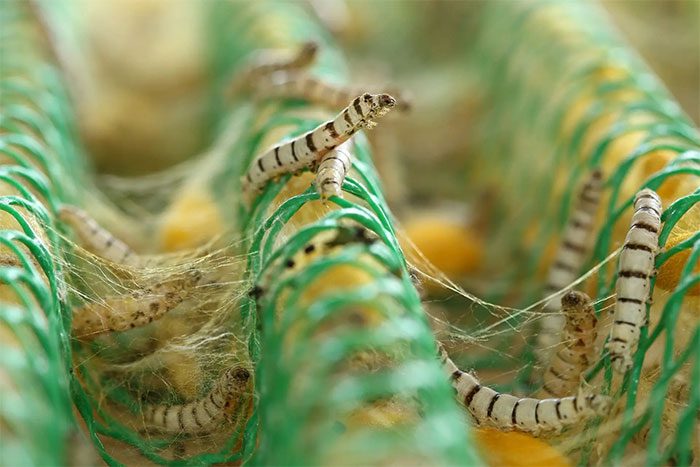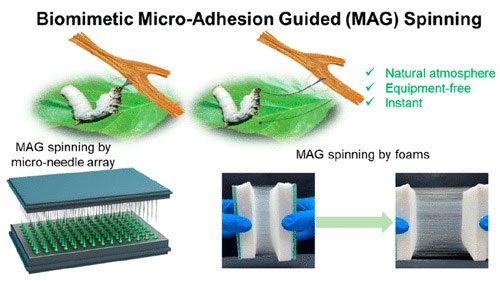Mother Nature always has solutions for every problem; it’s just a matter of whether we recognize them early enough.
In recent years, nanofibers have been increasingly applied in various fields, from wound dressings to air filters and high-strength composite materials. However, the current methods for producing nanofibers remain quite complex, primarily relying on electrospinning technology, which is slow and prone to clumping.
Recently, scientists have developed a new method for producing these nanofibers more quickly and simply, inspired by the process used by silkworms to produce silk.

Silkworms spinning silk to weave fabric.
In nature, silkworms create high-quality, ultra-thin silk fibers quickly and easily. They accomplish this by simply secreting their sticky saliva onto a surface and then retracting their heads to draw the saliva into a long fiber. Researchers from Sichuan University (China) have replicated this process using a technique called Microneedle-Assisted Guided Fiber Drawing (MAG).
This process involves pushing a series of ultra-thin needles into a sponge soaked in a polyethylene oxide solution and then pulling them out. As the needles are withdrawn, each needle pulls a thin polymer strand from the sponge. These strands dry quickly and can be cut and utilized at that point.

The MAG process simulates the silk-spinning of silkworms.
Furthermore, by mimicking the various ways that silkworms move their heads while creating silk, scientists can produce different types of nanofibers through the MAG technique.
For instance, if the needles are simply pulled straight out of the sponge, all the fibers are aligned. However, if the needle array is shaken or vibrated, the fibers will cross-link with one another. Additionally, if the sponge is rotated during the pulling process, all the nanofibers will twist together to form a larger strand.
By simply placing two pieces of polymer-soaked sponge together and pulling them apart, scientists have been able to create straight nanofibers. These fibers can then be immediately used to make a bandage applied to a person’s skin. Moreover, an antibiotic has been added to the polymer, allowing this bandage to inhibit the growth of harmful bacteria.
This research has been published in the journal Nano Letters. The MAG fiber drawing process is demonstrated in the video below.
The MAG nanofiber drawing process





















































